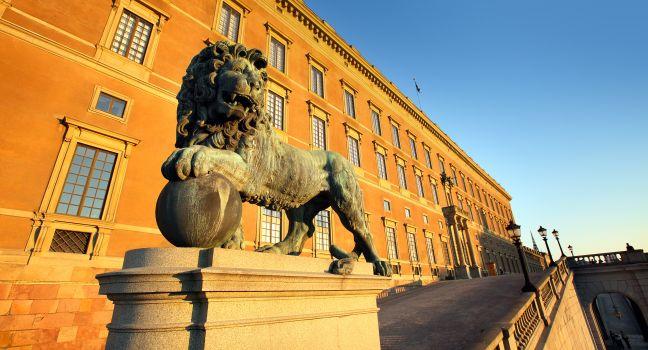Kungliga Slottet

Designed by Nicodemus Tessin the Younger, the Royal Palace was completed in the 1770s to replace the Tre Kronor palace, which burned down in 1697. Each of the four facades has a distinct style, signifying different characteristics: the west is the king's (or the male) side; the east is the queen's (or female) side; the south belongs to the nation; and the north represents royalty and power in general. Watch the changing of the guard in the curved terrace entrance and view the palace's fine furnishings and Gobelin tapestries on a tour of Representationsvåningarna (the State Apartments). Remnants of the earlier palace, as well as artifacts recovered after the fire, can be seen at the Tre Kronor Museum on the ground floor of the north side. To survey the crown jewels, which are no longer used in this self-consciously egalitarian country, head to Skattkammaren (the Treasury). Livrustkammaren (the Royal Armory)—Sweden's oldest museum, dating back nearly 400 years—has an outstanding collection of weaponry, coaches, and royal regalia. Your admission ticket includes the State Apartments, the Treasury, Gustav III's Museum of Antiquities, and the Tre Kronor Museum within seven days. Entrance to Livrustkammaren is separate. Entrances to the Treasury and Armory are on the Slottsbacken side of the palace.



